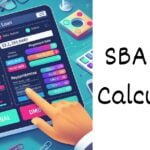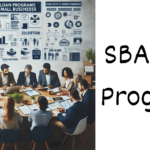Student loan forgiveness programs have become an increasingly important topic in recent years, as the burden of student loan debt continues to weigh heavily on millions of Americans. With the rising cost of education and the economic challenges faced by many, exploring options for student loan forgiveness has become a priority for those seeking relief.
The Changing Landscape
Understanding the current landscape of student loan forgiveness requires staying up-to-date with the latest developments. It is important to note that student loan forgiveness programs can be complex and subject to change. Therefore, it is crucial to consult official sources and trusted financial advisors for the most accurate and reliable information.
In recent years, there have been several significant updates in the realm of student loan forgiveness. These updates include changes to existing programs, the introduction of new programs, and potential reforms on the horizon. Staying informed about these updates can help borrowers make informed decisions regarding their student loan repayment strategies.
Existing Programs
Currently, there are several student loan forgiveness programs available to borrowers. These programs include Public Service Loan Forgiveness (PSLF), Teacher Loan Forgiveness, and Income-Driven Repayment (IDR) plans, among others.
The Public Service Loan Forgiveness program is designed for individuals working in public service or non-profit organizations. After making 120 qualifying payments, borrowers may be eligible for loan forgiveness. However, it is important to note that not all loans and repayment plans are eligible for PSLF, so understanding the specific requirements is crucial.
Teacher Loan Forgiveness is another program that provides relief for educators. Teachers who work in low-income schools or educational service agencies may be eligible for forgiveness of up to $17,500 on their Direct Subsidized and Unsubsidized Loans or Subsidized and Unsubsidized Federal Stafford Loans.
Income-Driven Repayment plans, such as Income-Based Repayment (IBR), Pay As You Earn (PAYE), and Revised Pay As You Earn (REPAYE), offer borrowers the opportunity to make payments based on their income and family size. After a certain number of qualifying payments, any remaining balance may be forgiven.
New Programs and Proposals
In addition to existing programs, new student loan forgiveness initiatives have been introduced in recent years. These initiatives aim to provide relief for specific groups of borrowers or address specific challenges.
For example, the Temporary Expanded Public Service Loan Forgiveness (TEPSLF) program was established to assist borrowers who were initially denied forgiveness under the PSLF program due to not meeting certain requirements. This program provides a second chance for borrowers who may have been eligible for forgiveness but were denied due to technicalities.
Furthermore, proposals for broader student loan forgiveness have gained attention in recent years. These proposals include ideas such as canceling a portion of student loan debt for all borrowers or forgiving loans for individuals who meet certain income thresholds. While these proposals have not yet become law, they highlight the ongoing discussions surrounding student loan forgiveness.
Navigating the Options
With the multitude of student loan forgiveness programs and options available, navigating the landscape can be overwhelming. It is crucial to assess personal circumstances, loan types, and eligibility criteria to determine the best course of action.
Start by gathering information about the various programs and their requirements. Understand the specific criteria for each program and determine if you meet the qualifications. Consulting with a trusted financial advisor or student loan expert can provide valuable guidance in navigating the options.
Additionally, staying informed about the latest updates and developments in student loan forgiveness is essential. Changes in legislation or new programs may present opportunities for borrowers that were previously unavailable.
Conclusion
Navigating the landscape of student loan forgiveness requires staying informed about the latest updates and developments. Understanding the existing programs, new initiatives, and potential reforms can help borrowers make informed decisions about their student loan repayment strategies. By staying up-to-date and seeking guidance from trusted sources, borrowers can navigate the complex terrain of student loan forgiveness and find relief from the burden of student loan debt.










